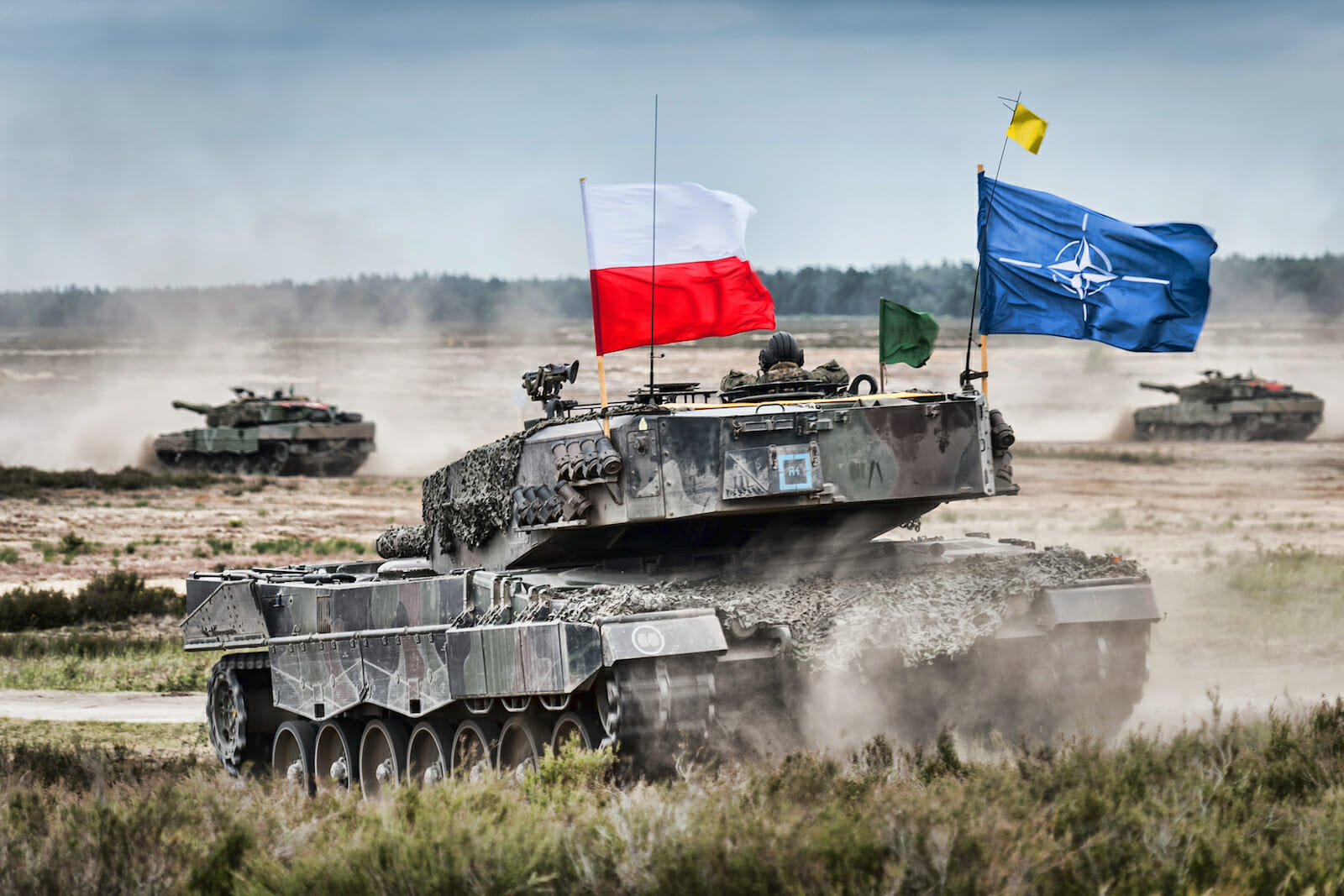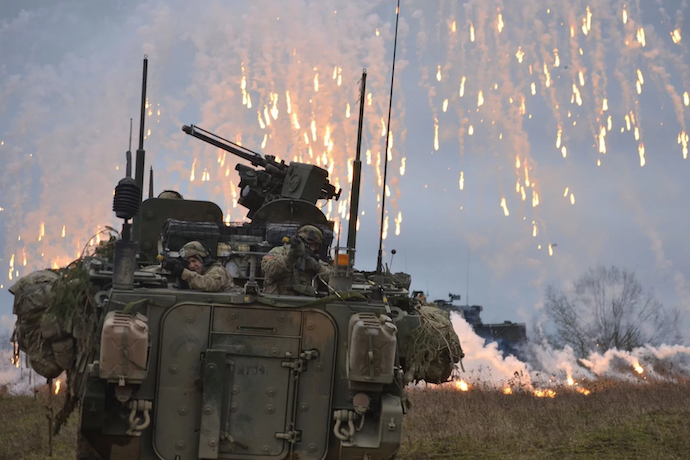
Russia Made NATO Relevant Again. Now is the Time for a New Treaty.
The idea of collective defence is at the very heart of NATO’s founding treaty, enshrined within Article 5. It states that “an armed attack against one or more of them in Europe or North America shall be considered an attack against them all.”
Despite being established in 1959, it has only ever been invoked once, following 9/11.
The Ukraine conflict has so far been primarily a conventional war, but in the years ahead it will prove the exception. The principal threat to NATO members won’t come from artillery shells or tanks rolling across the border but rather from cyber, biological, drone, and likely space warfare.

Where does Article 5 fit in this modern world? In my view, it is outdated, and its scope is too monolithic. It needs to be scrapped. A new protocol is required for a new era of warfare and unless NATO responds to these threats, it is setting itself up for failure.
A broader definition of ‘armed attack’
The language used in the treaty is very specific, saying “an armed attack” would precipitate a joint response. Cyber-attacks, however, live in an interesting space as they are non-violent and therefore not an “armed attack,” yet could paralyse a country’s infrastructure. This could embolden rogue actors who know that this is a tool they can utilise without necessarily triggering an Article 5 response.
For example, in 2007, Estonia was hit by a ruthless cyber-attack from Russia in response to the removal of a Soviet-era war monument. For three weeks, state and commercial websites ranging from defence ministries to banks and media outlets were targeted, rendering them inaccessible to the public. Estonia was even forced to close its digital borders and block all international web traffic.
At the time, this didn’t invoke an Article 5 response. However, the alliance has since recognised in today’s world this could be enough for an invocation. And yet, when Iran committed a cyber-attack against Albania in September, despite Prime Minister Edi Rama being very open about weighing the option to invoke Article 5, ultimately, he chose not to.
Part of the reason could be that it isn’t clear what an Article 5 response to a cyber-attack would look like. Within traditional warfare, our attack and defence posture are fairly well understood – sending tanks, and missiles in support. The same cannot be said for cyberwarfare. Would it merit returning cyber-attacks in kind? Or a stronger, military response?

This lack of clarity in an outdated treaty will continue to create ambiguity within NATO unless it is addressed. A lot of focus and energy is going into expanding membership, with the likes of Finland and Sweden set to join but making Article 5 fit for the 21st century is equally important.
Member states and allies
The other issue with Article 5 is the narrow definition of which nations the alliance will defend. As the Russian invasion of Ukraine has shown, NATO could not deter an attack on a non-member state. To create an effective deterrent for this type of situation, NATO needs to be able to protect not only its members but also a sub-group of ‘ally states.’
For these allies, there would not be the strength of a NATO ‘obligation’ to intervene if they were attacked, but it would be enshrined in an updated treaty that member nations will consider in good faith whether to support an ally. This would make it less important to expand NATO’s membership whilst creating a further layer of deterrent. One will never know if Vladimir Putin would have gambled on attacking Ukraine if it had been an official NATO ally, entitled to its protection.
Obviously, the process of getting NATO members to align on who should be on this list of allies would be challenging. However, once it had been agreed you could go down one of two routes. Either publish the list to discourage an attack on those nations that are ‘with’ NATO or adopt a policy of deliberate ambiguity as a general deterrent on rogue actors.
Obviously, this has the potential to put NATO in compromising positions, Taiwan being an obvious example. If the country were a named ally, would NATO be willing to defend Taiwan from an attack by China? Perhaps its named ally status would prevent that question from ever having to be answered.
Additionally, for those member states already in the organisation, a rethink on the formula for defence contributions is needed. National defence structures need to be fully integrated into a NATO structure to avoid duplication of resources, cost, and effort.
Reclaim the security architecture
More broadly, with the Russia-China axis weakened, now is the time for a bold vision for a new global security framework. In light of the Ukrainian invasion, if the West wants to stand against territorial aggression it needs to involve non-Western power blocs within the joint defence architecture. This cannot be a club only for blue-eyed blondes.
It obviously isn’t possible to extend NATO membership to all friendly nations and nor should it be attempted. But the West, and particularly the U.S., could encourage the creation of sister organisations, including a South Atlantic Treaty Organisation; an organisation in the Middle East for the Abraham Accords countries; and similar bodies in Southeast Asia and Africa for nations who share the ideal of Westphalian sovereignty.
With Russia enfeebled, it is the perfect moment to re-imagine international security. With a new Article 5 to reflect the modern world of warfare; the creation of a network of allies; and the building out of sister treaties globally, we can protect our vision of the global world order.

